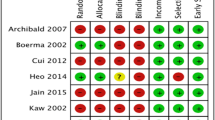Abstract
Background: The current management of patients with ductal calculi and gallstone disease consists of endoscopic stone extraction (ESE) followed by laparoscopic cholecystectomy (LC). The advent of techniques of laparoscopic ductal stone clearance has introduced an alternative single stage laparoscopic treatment for these patients. The EAES ductal stone trial was set up to compare the relative efficacy and outcome of these two management options.
Methods: The study consists of a prospective randomized controlled clinical trial comparing two management options of patients undergoing LC and suspected of harbouring common duct stones. Patients registered into the trial are randomized to one of two arms: (i) Group A—preoperative ERC with ESE followed by LC during the same hospital admission. (ii) Group B—single stage laparoscopic management consisting of LC and laparoscopic stone extraction either by the trans-cystic duct route or by direct supraduodenal common duct exploration.
Results: This preliminary analysis was carried out on 207 randomized patients with comparisons being made on the intention to treat principle. The two groups (A = 106, B = 101) were comparable with respect to clinical features. ASA grade, serum biochemistry and ultrasound findings.
Conclusions: These preliminary findings indicate equivalent success rates and patient morbidity between the two management options but a shorter hospital stay (cost benefit) with the single stage laparoscopic treatment. Trans-cystic duct extraction is a more benign procedure than laparoscopic supraduodenal CBD exploration and is accompanied by a significantly shorter hospital stay. The higher incidence of conversion in the single stage laparoscopic group compared to the two-stage arm is due to the preference for open common duct exploration when the laparoscopic attempt failed by the majority of participating surgeons. The results to-date suggest that in fit patients, single stage laparoscopic treatment is the better option and the role of ESE should change to selective use in those patients in whom laparoscopic ductal stone extraction has failed.
Similar content being viewed by others
Author information
Authors and Affiliations
Consortia
Additional information
Received: 28 May 1996/Accepted: 3 July 1996
Rights and permissions
About this article
Cite this article
European Association of Endoscopic Surgeons (EAES) Ductal Stone Co-operative Group:., Cuschieri, A., Croce, E. et al. EAES ductal stone study. Surg Endosc 10, 1130–1135 (1996). https://doi.org/10.1007/s004649900264
Published:
Issue Date:
DOI: https://doi.org/10.1007/s004649900264




